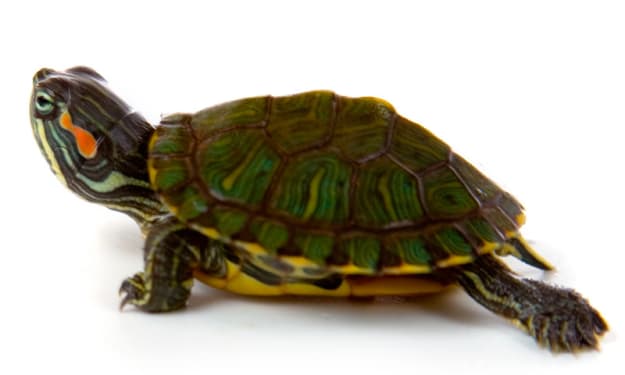
There is no contradiction in the idea that, in the very beginning of man’s habitation of this world, he made a friend and companion of some kind of aboriginal representative of our modern dog, and that, in exchange for its assistance in protecting him from wilder animals and guarding his sheep and goats, he gave it a share of his food, a corner in his dwelling, and grew to trust and care for it. Originally, the animal was most likely just a particularly mild jackal, or an injured wolf pushed to seek safety in strange environs by its comrades from the wild marauding pack.It’s easy to see the relationship beginning with some pitiful whelps being carried home by early hunters to be cared for and grown by the women and children. Dogs brought into the home as toys for the kids would come to see themselves as family members and be treated as such.
There are traces of an indigenous dog family in almost every part of the world, with the exception of the West Indian Islands, Madagascar, the eastern islands of the Malayan Archipelago, New Zealand, and the Polynesian Islands, where there is no evidence of any dog, wolf, or fox having existed as a true aboriginal animal. For millennia, the dog remained wild and neglected in the old Oriental regions, and in general among the early Mongolians, roaming in packs, emaciated and wolf-like, as it does today through the streets and under the walls of every Eastern city. There was no attempt to entice it into human company or increase its docility. We don’t find any unique types of canine shape until we look at the records of the higher civilisations of Assyria and Egypt.
The dog was despised in Palestine, and it is frequently referred to as a “unclean beast” in both the Old and New Testaments with derision and contempt. Even the well-known reference to the Sheepdog in the Book of Job, “But now they that are younger than I have me in derision, whose fathers I would have disdained to set with the dogs of my flock,” is tinged with contempt, and it is noteworthy that the only biblical allusion to the dog as a recognized companion of man occurs in the apocryphal Book of Tobit (v. 16), “So they went forth both, and the young man’s
The large number of diverse dog breeds, as well as the huge variances in their size, points, and overall look, make it impossible to imagine that they might have had a common ancestor. When one considers the differences between the Mastiff and the Japanese Spaniel, the Deerhound and the trendy Pomeranian, the St. Bernard and the Miniature Black and Tan Terrier, one is baffled by the likelihood that they shared a same ancestor. The difference between a Shire horse and a Shetland pony, a Shorthorn and a Kerry cattle, or a Patagonian and a Pygmy is no bigger, and all dog breeders know how easy it is to develop a range of types and sizes through breeding Selection was researched.
To fully comprehend this subject, it is important to first explore the structural similarities between the wolf and the dog. This structural identity may best be investigated by comparing the osseous systems, or skeletons, of the two species, which are so similar that their transposition would be difficult to detect.
Seven vertebrae make up the dog’s neck, thirteen in the back, seven in the loins, three sacral vertebrae, and twenty to twenty-two in the tail. There are thirteen pairs of ribs in both the dog and the wolf, nine real and four false. Each one has 42 teeth. They both have five front and four back toes, and the common wolf resembles a huge, bare-boned dog so closely that a popular description of one might be used to describe the other.
Their behaviors are also not dissimilar. When confined among dogs, the wolf’s natural sound is a loud howl, but he will learn to bark. Even though he is a carnivore, he will eat veggies and grass when he is unwell. A pack of wolves will split into two parties during a pursuit, one pursuing the quarry’s trail and the other attempting to intercept its retreat, demonstrating a high level of planning, a quality shared by many of our sports dogs and terriers when hunting in groups.
Another notable similarity between the Canis lupus and the Canis familiaris is that both species have a sixty-three-day gestation period. A wolf’s litter consists of three to nine cubs, each of whom is blind for twenty-one days. They are suckled for two months before being allowed to ingest half-digested meat disgorged for them by their dam or even their sire.
The native dogs of all places are similar in size, appearance, shape, and behavior to the native wolves of those areas. There are just too many instances of this most critical situation to enable it to be dismissed as a simple coincidence. “The likeness between the North American wolves and the domestic dog of the Indians is so great that the size and strength of the wolf appears to be the sole difference,” wrote Sir John Richardson in 1829.
The fact that all domestic dogs bark, but all wild Canidae express their sentiments solely by howling, has been cited as the one irrefutable proof against the lupine kinship of the dog. However, the challenge is not as big as it appears, since we know that jackals, wild dogs, and wolf pups raised by bitches quickly pick up the practice. Domestic dogs, on the other hand, that are permitted to go free forget how to bark, and some have not yet learned how to do so.
As a result, the existence or absence of a barking habit cannot be used as a factor in determining the dog’s origin. As a result, this stumbling block vanishes, leaving us in the position of agreeing with Darwin, who concluded that “it is quite probable that the world’s domestic dogs have descended from two decent kinds of wolf.”(Canis lupus and Canis latrans), as well as two or three other dubious wolf species, namely the European, Indian, and North African forms; at least one or two South American canine species; several races or species of jackal; and possibly one or more extinct species”; and that the blood of these, in some cases mixed together, flows in the veins of our domestic breeds.





Comments
There are no comments for this story
Be the first to respond and start the conversation.